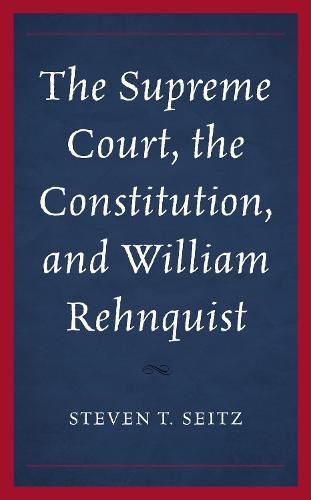Readings Newsletter
Become a Readings Member to make your shopping experience even easier.
Sign in or sign up for free!
You’re not far away from qualifying for FREE standard shipping within Australia
You’ve qualified for FREE standard shipping within Australia
The cart is loading…






The Founding Fathers wrote the Constitution at a level sufficiently general to guide lawmaking while avoiding great detail. This four-page document has guided the United States of America for more than two centuries. The Supreme Court has parsed the document into clauses, which plaintiffs and defendants invoke in cases or controversies before the Court. Some, like the Interstate Commerce Clause, are central to the survival of a government of multiple sovereignties. The practice of observing case precedents allows orderly development of the law and consistent direction to the lower courts. The Court itself claimed the final power of judicial review, despite efforts to the contrary by the executive and legislative branches of the national government and the state supreme courts. The Court then limited its own awesome power through a series of self-imposed rules of justiciability. These rules set the conditions under which the Court may exercise the extraordinary final power of judicial review. Some of these self-imposed limits are prudential, some logical, and some inviting periodic revision. This book examines the detailed unfolding of several Constitutional clauses and the rules of justiciability. For each clause and each rule of justiciability, the book begins with the brilliant foundations laid by Chief Justice John Marshall, then to the anti-Federalist era, the Civil War, the dominance of laissez faire and social Darwinism, the Great Depression redirection, the civil rights era, and finally the often-hapless efforts of Chief Justice Rehnquist.
$9.00 standard shipping within Australia
FREE standard shipping within Australia for orders over $100.00
Express & International shipping calculated at checkout
The Founding Fathers wrote the Constitution at a level sufficiently general to guide lawmaking while avoiding great detail. This four-page document has guided the United States of America for more than two centuries. The Supreme Court has parsed the document into clauses, which plaintiffs and defendants invoke in cases or controversies before the Court. Some, like the Interstate Commerce Clause, are central to the survival of a government of multiple sovereignties. The practice of observing case precedents allows orderly development of the law and consistent direction to the lower courts. The Court itself claimed the final power of judicial review, despite efforts to the contrary by the executive and legislative branches of the national government and the state supreme courts. The Court then limited its own awesome power through a series of self-imposed rules of justiciability. These rules set the conditions under which the Court may exercise the extraordinary final power of judicial review. Some of these self-imposed limits are prudential, some logical, and some inviting periodic revision. This book examines the detailed unfolding of several Constitutional clauses and the rules of justiciability. For each clause and each rule of justiciability, the book begins with the brilliant foundations laid by Chief Justice John Marshall, then to the anti-Federalist era, the Civil War, the dominance of laissez faire and social Darwinism, the Great Depression redirection, the civil rights era, and finally the often-hapless efforts of Chief Justice Rehnquist.